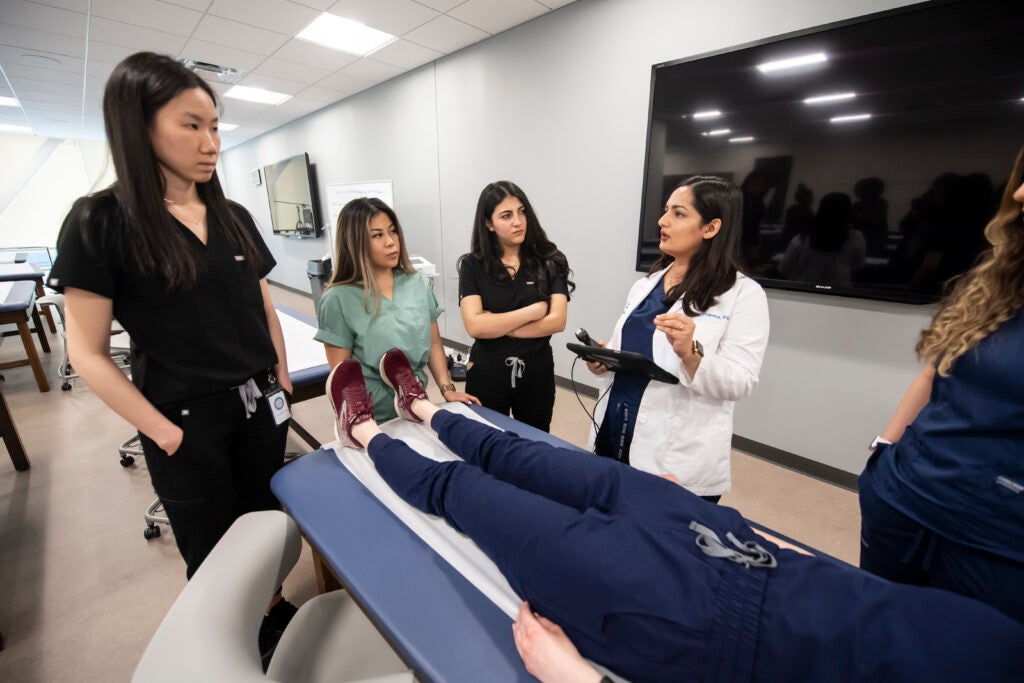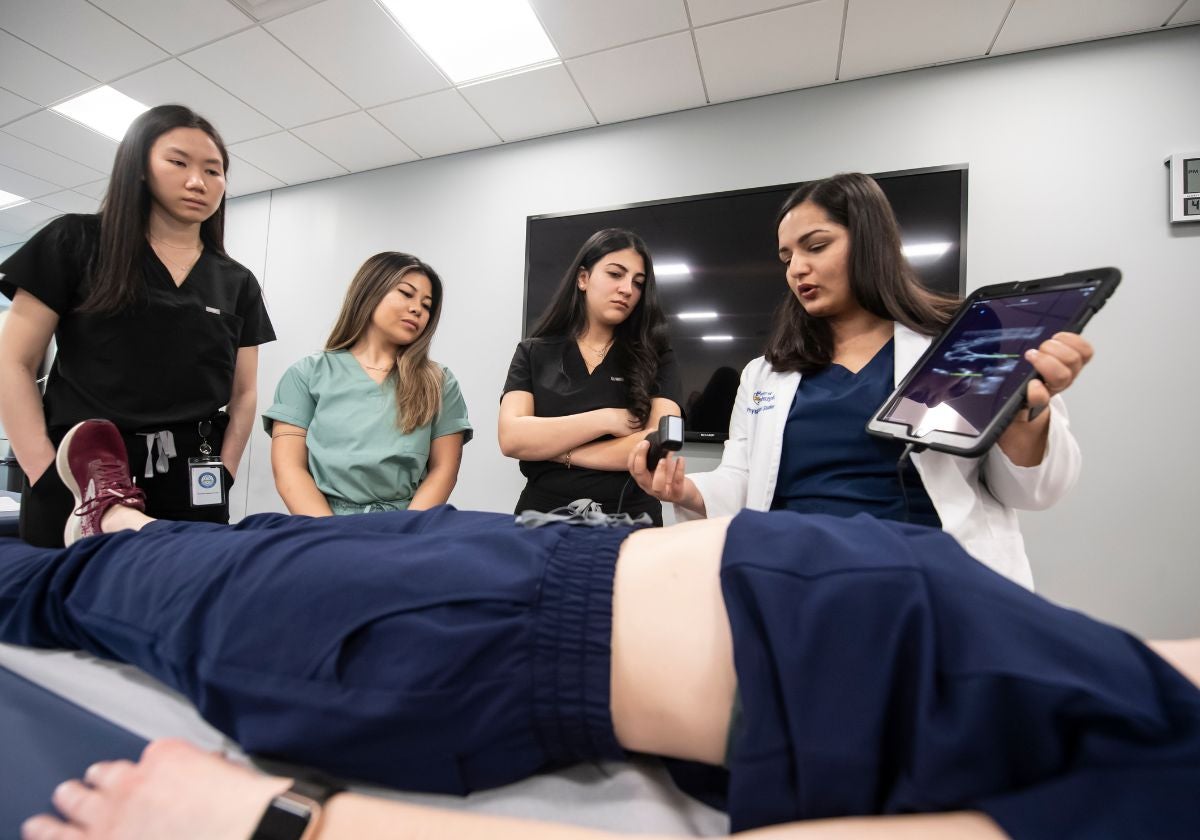POCUS (Point of Care Ultrasound) technology began in the emergency medicine profession in 2001, and its importance in health care has grown ever since, especially as a regular diagnostic tool for physician assistants. University of Pittsburgh Physician Assistant Studies (PAS) students are using POCUS in their curriculum to reinforce their learning and to become valuable assets to health care teams upon graduation.
What is POCUS?
The handheld ultrasound examination tool allows a clinician to answer specific medical questions and perform procedures with better precision. POCUS was initially implemented in emergency medicine and critical care, but it has evolved for usage in prehospital, outpatient and inpatient settings to find things like pneumonia, cellulitis, fractures and bleeding.
A traditional ultrasound usually requires the medical provider to order an ultrasound test and a technician to perform that test. Then a radiologist would read the images and write a report, which is given to the provider who makes a medical decision based on the report. POCUS turns these steps and skills into a one-person job all within the scope of one-to-two minutes versus one-to-two days.
The POCUS Influence on Pitt Physician Assistant Studies
“There’s pretty much no body part that you can’t ultrasound,” says On-Campus Physician Assistant Studies Program Director Susan Graff. “It can be used to look at the heart and see how it is working. It can be used to look at the lungs and you can even ultrasound the eye. But ultrasounds have really expanded to go beyond just acute care medicine.”
“When my co-developer Erika Basset and I started this program five years ago in 2020, I think it was just starting to pick up in the outpatient setting. And now, clinically, it’s everywhere. There are a couple of states where PAs can be credentialed using POCUS, even if their supervising physician is not.”
The PA Studies program has introduced these skills to be able to provide ultrasound exams more frequently as technology evolves and facilities start adopting it.
“We know physicians are becoming younger, which is going to dramatically increase the use of point of care ultrasound in internal medicine, family medicine, emergency medicine or OBGYN. There are all these medical school residents learning it now, too, so many PAs may be expected to use this technology under their supervising physicians,” says Graff.
Thanks to the University of Pittsburgh Office of the Provost Innovation in Education Award, PA Studies was able to purchase the POCUS technology to be able to provide instruction and integrate it into the curriculum.
Graff says, “Teaching POCUS will make our PAs more competitive in the market because there are a lot of places that are starting to implement it into practice.”

“I was also very fortunate that one of my attending physicians, Dr. Christopher Scott who works in the Department of Critical Care Medicine, is a national point of care ultrasound expert and does a lot of curriculum building and teaching,” explains Graff.
“He built the point of care ultrasound curriculum for the nurses of the Veterans Affairs system nationwide, and he was very gracious and willing to consult with Erika Bassett, who’s a critical care PA and Pitt PA Studies adjunct faculty member, and me about making this education accessible to our students.”
Adapting to Student Feedback in the Classroom
Graff continues to share that POCUS teaching doesn’t stop at learning the system itself. It can have effects on other portions of the program.
“Use of ultrasound also enhances your understanding of more basic scientific processes, specifically anatomy,” she says. “For example, it’s hard to visualize the heart in the chest cavity. Once you get an ultrasound machine and put the transducer on the chest and see the heart, then you understand why the point of maximal impulse is right there, because that’s the way the heart is situated in the chest.”
Graff said several students have benefited greatly from their exposure to POCUS, utilizing their knowledge for further academic achievement.
“I’ve had clinical year students tell me that they have been able to practice POCUS and impressed their clinical instructors,” Graff said. “I also had a new graduate tell me that they got a job because of their POCUS experience. We’ve even had a handful of students who have come from out of state to our program specifically because of our POCUS coursework.”
Graff continues to discuss the faculty’s openness to improve the coursework to meet the needs of PAs. A recent athletic trainer and PAS student was interested in soft tissue, musculoskeletal joint injections, which set a new POCUS learning module into motion.
She explains, “We have fully integrated musculoskeletal and soft tissue modules into the curriculum. Based on student feedback, we moved POCUS to the surface anatomy course in their first semester. This will ultimately benefit their learning in anatomy courses and allow them to get exposure to POCUS right at the start of the program.”


